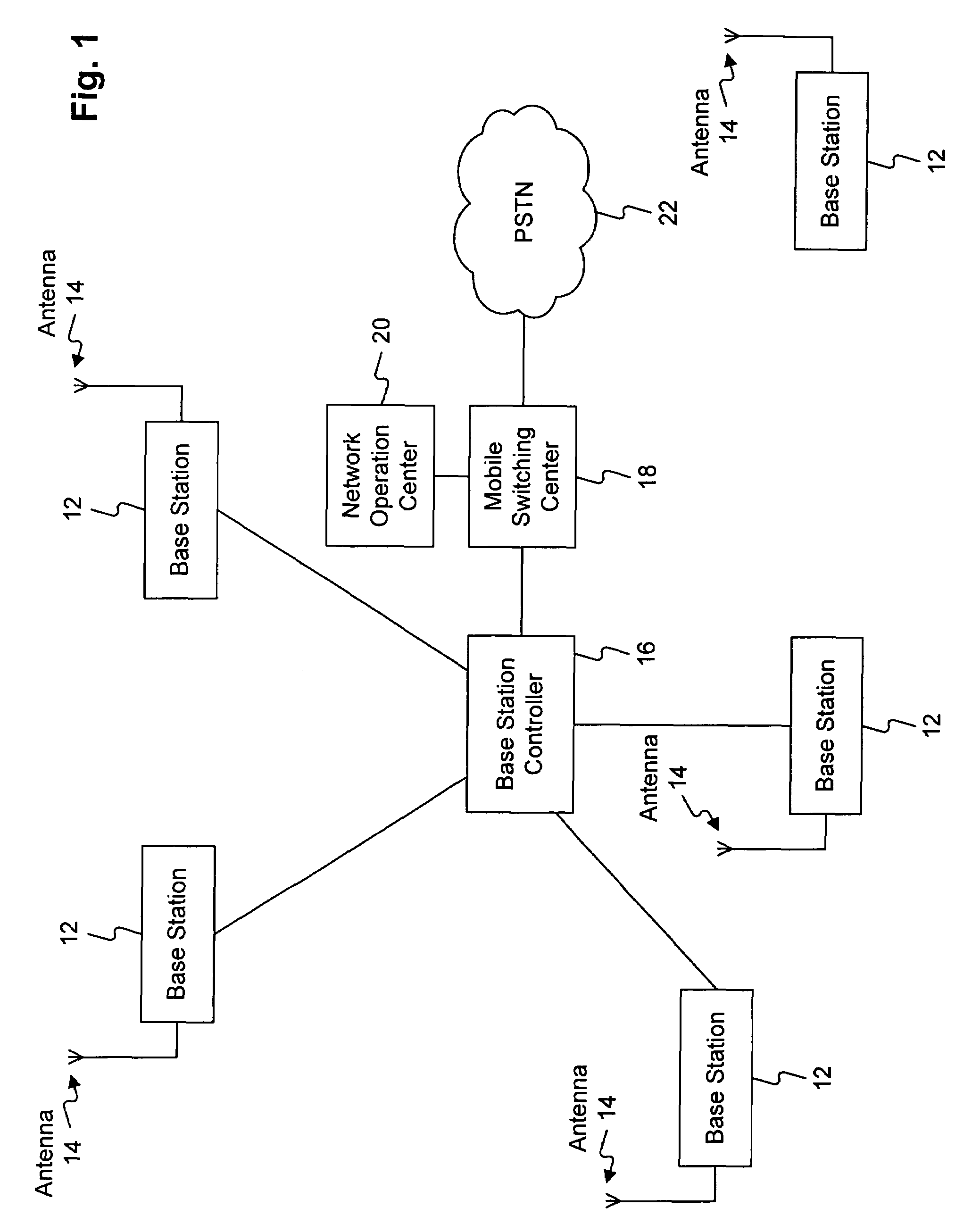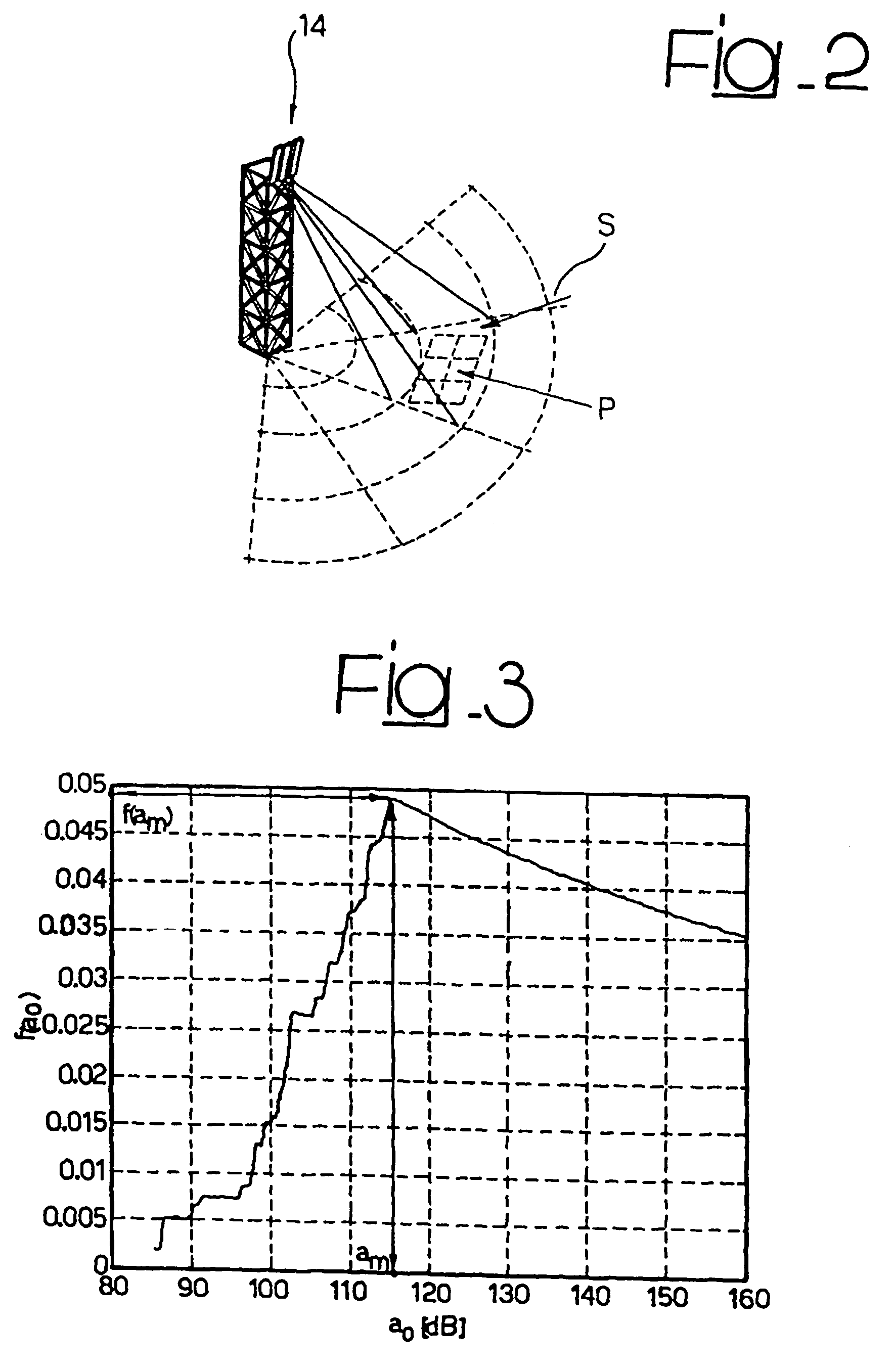Method for configuring a communication network, related network architecture and computer program product therefor
a communication network and network architecture technology, applied in the field of communication networks, can solve the problems of inability to achieve the optimal tilt angle set for a given antenna at a given time, and the prior art arrangement still suffers from a number of intrinsic drawbacks, so as to achieve the effect of improving the performance of the whole network and maximising the traffic ratio
- Summary
- Abstract
- Description
- Claims
- Application Information
AI Technical Summary
Benefits of technology
Problems solved by technology
Method used
Image
Examples
Embodiment Construction
[0047]In FIG. 1, reference 10 indicates as a whole a telecommunication system such as a mobile communication network according to any known standard.
[0048]A GSM network or a UMTS network may be considered as examples of the so-called second and third generations (3G) of such systems. The invention is however applicable to any type of communication networks, even without limitation to a cellular communication network.
[0049]The schematic representation of FIG. 1 exclusively represents the “fixed” part of the network, excluding the mobile terminals. The fixed part of the network shown includes a plurality of base stations 12 each having associated therewith at least one respective radiation system such as an antenna 14.
[0050]Each or at least a part of the antennas 14 shown are of the kind whose radiation diagram may be selectively adjusted, thus making it possible to modify the radiation diagram of the antenna by means of electrical signals provided by the respective base station 12 de...
PUM
 Login to View More
Login to View More Abstract
Description
Claims
Application Information
 Login to View More
Login to View More - R&D
- Intellectual Property
- Life Sciences
- Materials
- Tech Scout
- Unparalleled Data Quality
- Higher Quality Content
- 60% Fewer Hallucinations
Browse by: Latest US Patents, China's latest patents, Technical Efficacy Thesaurus, Application Domain, Technology Topic, Popular Technical Reports.
© 2025 PatSnap. All rights reserved.Legal|Privacy policy|Modern Slavery Act Transparency Statement|Sitemap|About US| Contact US: help@patsnap.com



